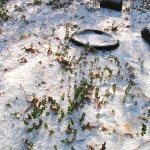This blog is my experiment with how my own small and everyday choices for peace impact my life and others. – Peggy Pate-Smith (2010) in “Peace is a choice”
Everyday choices often have a far-reaching impact because we live in a world that’s so interconnected. I tend to think in terms of the environmental impact of my actions: Do I buy this pair of shoes that may have been made by child labor in China? If I get a new, better cell phone will the old one be recycled properly or will it shipped off to some developing country where its corrosion will contaminate the water supply?
Peggy Pate-Smith from Park View Montessori‘s Middle School in Jackson, TN has been thinking about peace. Her blog, appropriately titled Peace is a Choice, logs her thoughts on small and big matters regarding peace. I’ve found it a great place to find out about peace projects, many with a Montessori link, in which students might be interested in participating.
This year I decided to do an experiment with peace. My hypothesis is that if each day I make at least one conscious decision to choose peace in my life AND blog about it that I will find my life more peaceful. I want to move beyond imagining peace and make a deliberate effort to choose peace. Peggy Pate-Smith (2010) in “Peace is a Choice”.
Ms. Pate-Smith’s master’s thesis, “Implications of Peace in the Montessori Environment” won American Montessori Society’s 2007 Outstanding Master’s Thesis Award.


